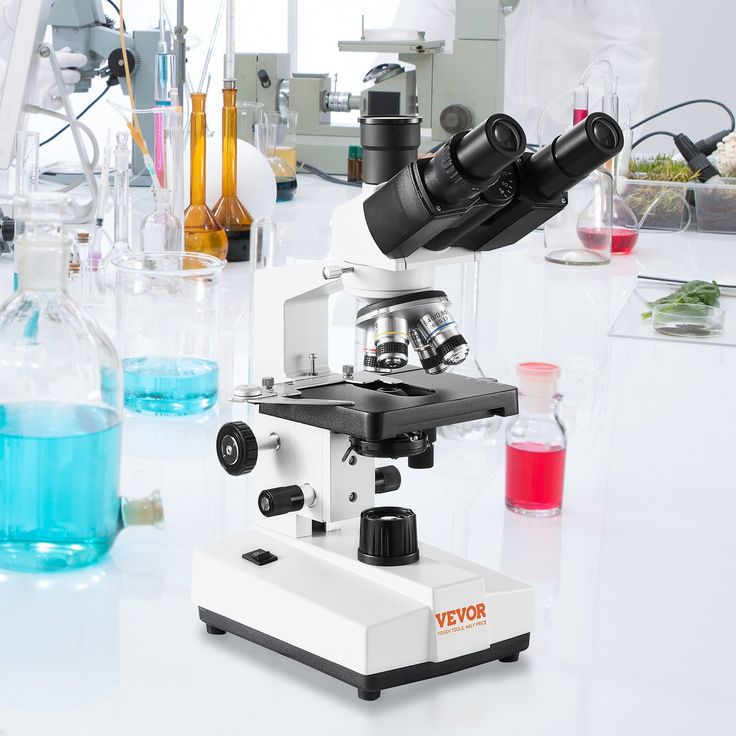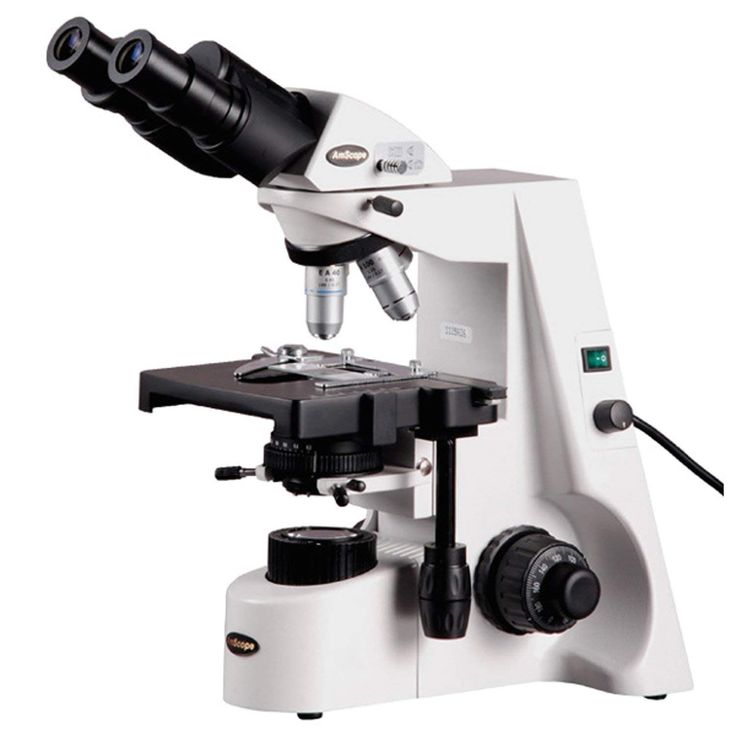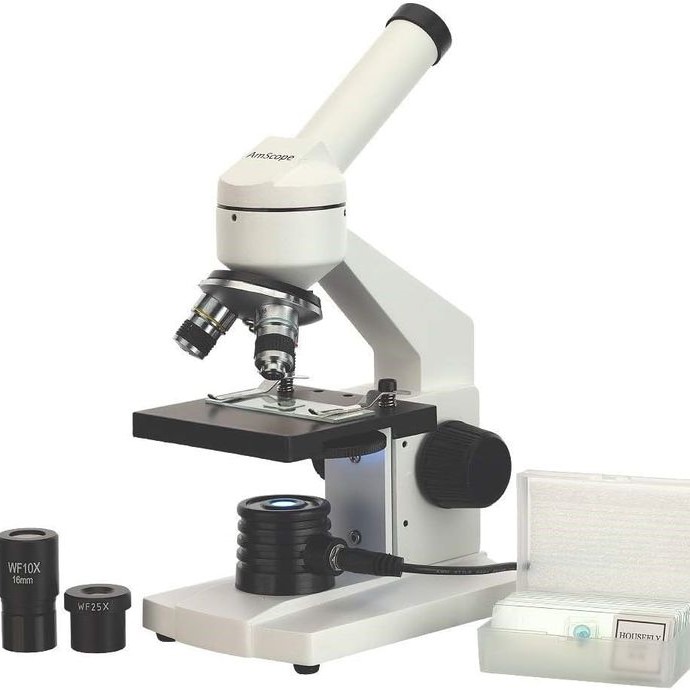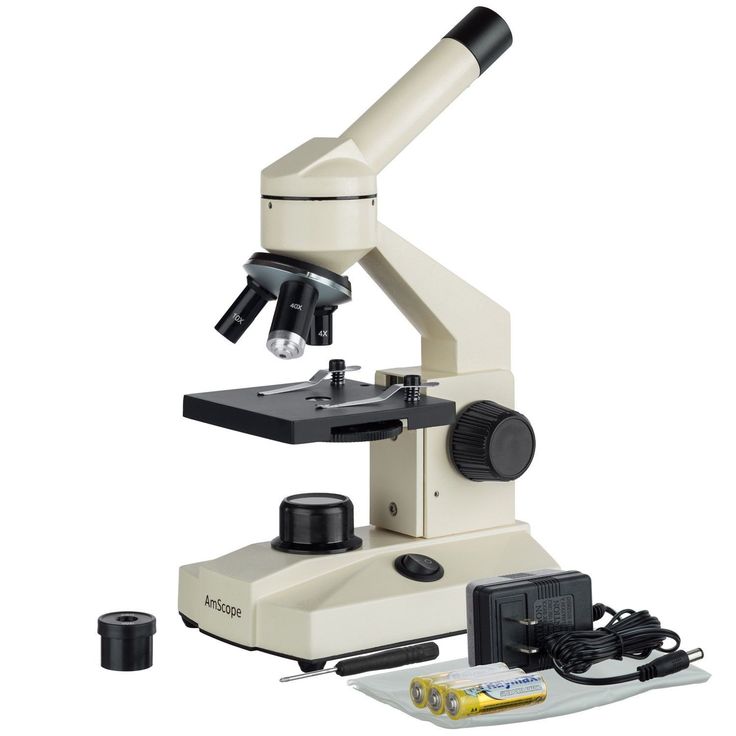Introduction to the Compound Microscope
What is a compound microscope? The compound microscope is a vital tool for magnifying small objects. It allows us to see details invisible to the naked eye. This powerful instrument has multiple lenses. The main goal is to achieve high levels of magnification. It is essential for scientists, students, and hobbyists alike.
Understanding what a compound microscope is and how it works is crucial. It serves as the foundation for its diverse applications. These extend from education to cutting-edge research. A compound microscope consists of an eyepiece and objective lenses. These work together to enlarge the image of the specimen.

When we delve into the world of the minuscule, a compound microscope is our microscope. Through its lenses, a new realm of tiny wonders comes into focus. This blog post aims to explain its components and uses. We will also look at maintaining this intricate device. Finally, we’ll touch upon the latest advancements that enhance its functionality.
For anyone curious about the microscopic world, the journey begins here. Let’s learn about the compound microscope. We’ll explore its parts, capabilities, and how it sheds light on the unseen.
Key Components of a Compound Microscope
What is a compound microscope? The compound microscope is ingenious in its simplicity yet complex in its capabilities. It comprises several essential components that work in synergy to magnify samples. What makes this device so effective are the well-calibrated parts it’s built with. Understanding these parts is key to mastering the use of the microscope.
Optical System: Objectives and Eyepiece
The heart of the compound microscope lies in its optical system. Two main players define this system: the objectives and the eyepiece. The objectives are a series of lenses situated close to the specimen. They are responsible for the initial magnification. The eyepiece, or ocular lens, further magnifies the image as it reaches the viewer’s eye. Together, they form a powerful duo that enables users to peer into the micro world.
The Mechanism of Magnification
Magnification in a compound microscope is not a single-step process. It’s the product of multiplying the power of the objective lenses by the power of the eyepiece. For example, using a 10x eyepiece with a 40x objective lens results in 400x total magnification. This two-stage magnification approach allows for a detailed view of the specimen at various magnifications.
Focusing System: Coarse and Fine Adjustment Knobs
Precision in focusing is vital for clear observations. The compound microscope achieves this through two types of adjustment knobs. The coarse adjustment knob enables rapid focusing on the specimen. It’s particularly useful when switching between samples or different magnification levels. The fine adjustment, on the other hand, allows for meticulous control. It helps in obtaining a sharp, crisp image of the fine details within the specimen.

The Role of Illumination in Compound Microscopes
It’s crucial to discuss the role of the light source in a compound microscope. Proper illumination brings the specimen into clear view. It makes the detail and structure of the sample visible. In simple terms, without light, there’s nothing to see.
Light Sources and Condensers
Most compound microscopes use a built-in light source. This could be an LED or halogen lamp. The light source lies beneath the stage. It shines upwards through the specimen. This setup illuminates the sample evenly, which is essential for good image quality.
Condensers are also key in the illumination system. They focus the light source on the specimen. A well-focused condenser improves the resolution and contrast of the image. To adjust the amount of light, users can manipulate the diaphragm. This is typically located near the condenser. Adjusting the diaphragm controls the light’s intensity and its distribution over the specimen.
Together, the light source and condenser play a critical role. They ensure that we get the best possible view of the sample under examination. When we understand what a compound microscope is for, we appreciate the value of good lighting. With the right illumination, every facet of the sample becomes visible, down to the finest detail.
Various Types of Compound Microscopes
In exploring what a compound microscope is, we also encounter various models. Each serves a specific purpose in different fields of study and work.
Monocular, Binocular, and Trinocular Models
Monocular microscopes have a single eyepiece. Students and beginners often use them for simple observation. Binocular models boast two eyepieces. They provide comfort for prolonged use, which professionals appreciate. Trinocular microscopes include an additional third eyepiece. This port connects cameras for image capturing. It’s a feature valuable for documentation and advanced research.

Specialized Compound Microscopes for Enhanced Imaging
Beyond the basic models, specialized compound microscopes cater to specific needs. They may include features like phase contrast or fluorescence capabilities. These enhanced imaging techniques allow for the study of live cells or detailed structures. Some advanced microscopes can also connect to computers for digital analysis. Such features make these high-tech devices essential for cutting-edge scientific discoveries.
Common Applications of Compound Microscopes
The compound microscope, as versatile as it is powerful, caters to a wide array of uses across different sectors.
Educational Purposes
For starters, the compound microscope is a staple in education. It opens up the microcosmos for students. Biology classes use it to examine cells, tissues, and microorganisms. By seeing these tiny structures, students grasp complex concepts more easily. The hands-on experience cements their learning and sparks curiosity.
Research and Clinical Laboratories
In research and clinical labs, compound microscopes are indispensable. They help researchers study diseases, test drugs, and analyze samples. Clinicians also use them for diagnostic purposes. The precision of compound microscopes aids in discovering new medical treatments and understanding human biology better.
Industrial Uses and Material Sciences
Beyond classrooms and labs, these microscopes have a place in industry and material sciences. They allow for close inspection of metals, plastics, and textiles. Manufacturers check product quality using these microscopes. They can spot defects and ensure consistent production standards. In material sciences, microscopes reveal the composition and properties of materials, supporting innovation and development.
Maintaining and Troubleshooting Your Compound Microscope
Proper care is essential for a compound microscope’s longevity and performance. Regular maintenance ensures the device operates at its best. Below are tips and tricks for upkeep and problem solving.
Routine Maintenance Tips
To keep your microscope in top shape, follow these steps:
- Clean Regularly: Gently wipe optical lenses with lens paper. Avoid harsh chemicals that might damage coatings.
- Cover When Not in Use: Protect the microscope from dust by covering it with a dust cover.
- Handle With Care: Always carry the microscope with both hands. Support the base and the arm to avoid drops.
- Check the Light Source: Replace bulbs or LEDs as they dim over time, ensuring consistent illumination.
- Secure Loose Parts: Tighten any loose screws or components to prevent part misalignment.
- Avoid Moisture: Store the microscope in a dry area to prevent mold or fungus.

Routine maintenance keeps minor issues from becoming major problems. It also guarantees the longevity of your microscope.
Common Issues and How to Solve Them
Encountering problems with your microscope can be frustrating. Here are common issues and their solutions:
Blurry Image
- Checking the Objective Lens: A blurry image is often a sign that the objective lens needs cleaning. Dust, fingerprints, or other debris can distort the view, making it difficult to focus on the sample.
- Cleaning Procedure: Use a microfiber cloth or lens cleaning tissue and proper lens cleaner to gently wipe the objective lens. Avoid using paper products that can scratch the lens surface and ensure you are using the appropriate cleaning solution.
- Adjusting Focus Knobs: After ensuring the lens is clean, use the focus knobs to sharpen the image. Adjust the coarse focus knob first for major adjustments, followed by the fine focus knob for more precise clarity. Take your time to find the best focus for your specific specimen.
Dim Lighting
- Verifying Light Source Functionality: If the image appears too dark or dim, start by checking if the light source is functional. This could involve ensuring that the microscope is plugged in or that the on/off switch is engaged.
- Replacing the Bulb: If the light source is out, replace the bulb as necessary. Consult the microscope’s manual for instructions on the correct type of bulb and how to safely replace it without causing damage to the unit.
- Adjusting Condenser and Diaphragm: For optimal lighting, adjust the condenser and diaphragm settings. The condenser helps focus the light onto the specimen, while the diaphragm controls the amount of light reaching the sample. Experiment with these adjustments to achieve the best illumination for clear viewing.
Double Image
- Confirming Eyepiece Seating: If you’re seeing double images, it could be due to the eyepiece being improperly seated. Remove the eyepiece and reinsert it firmly to ensure a secure fit inside the microscope.
- Inspecting for Damage: Check for any damage to the optics, including the eyepiece and the objective lenses. Look for cracks, scratches, or other imperfections that might be causing the double vision effect. If damage is present, professional repair or replacement may be needed.
- Alignment Check: In some cases, the optical components may need realignment. This is generally best handled by a technician trained in microscope servicing if you suspect misalignment is causing double imaging.
Stiff Focus Knobs
- Assessing Focus Knob Movement: If the coarse or fine adjustment knobs are difficult to turn, it can hinder your ability to focus effectively. Stiff knobs can be a result of lack of lubrication or debris accumulation inside the mechanism.
- Applying Lubricant: Use an appropriate lubricant designed for fine machinery to ease the movement of the focus knobs. Apply the lubricant carefully following the manufacturer’s recommendations, often located in the microscope’s user manual.
- Regular Maintenance Checks: Regularly inspect and maintain the focal adjustment system to prevent stiffness. Periodic cleaning and lubrication will help ensure smooth operation, enhancing the overall user experience and prolonging the life of the microscope.
By addressing these issues promptly, you reduce the risk of damaging your compound microscope. Proper troubleshooting preserves the quality and accuracy of your observations.
Advancements in Compound Microscopy
As the field of microscopy evolves, so do the tools we use to explore the microscopic world. The relentless pursuit of clearer images and more detailed analysis drives technological advancements in compound microscopes. These advancements not only enhance the capabilities of the microscopes but also expand the scope of their applications.
Technological Innovations and Digital Integration
Modern compound microscopes have embraced the digital age. Today’s high-tech models feature digital cameras and software for image capture and analysis. Advanced imaging techniques, such as 3D reconstruction and quantitative data analysis, are now possible. Researchers can share and store images easily, making collaboration more efficient.
Digital integration also allows for the automation of many microscope functions. Users can program their microscopes to scan samples and focus automatically. This translates to faster, more accurate results, especially in high-throughput environments such as clinical diagnostics.
Live cell imaging has seen remarkable improvements. Enhanced contrast methods, like phase contrast and differential interference contrast, provide more details. Fluorescence microscopy now offers greater sensitivity and resolution. This is crucial when tracking interactions within living cells.
The compound microscope is no longer just a standalone instrument. With digital integration, it becomes part of a larger networked system. Monitoring experiments remotely is now feasible, enabling continuous observation without being physically present in the lab.
These advancements reaffirm what a compound microscope is capable of. With ongoing innovation, compound microscopes will continue to unlock secrets of the micro universe. They will aid scientific breakthroughs and broaden our understanding of life at the microscopic level.
Choosing the Right Compound Microscope
When selecting a compound microscope, it’s essential to consider several factors.
Factors to Consider Before Purchasing
Choosing the correct compound microscope involves weighing various aspects. Here’s what you should think about:
- Purpose: Define what you need the microscope for, such as education, research, or industry.
- Magnification Level: Determine the required magnification based on your samples.
- Optical Quality: Look for high-quality lenses for clear, crisp images.
- Illumination: Ensure the microscope has a reliable light source and condenser.
- Ergonomics: A comfortable design is key for prolonged use.
- Digital Features: Consider models with digital cameras and analysis software if needed.
- Budget: Balance the cost against the features and durability of the microscope.
- Brand: Choose a reputable brand with good after-sales support and service.
- Accessories: Check for additional components such as slides, covers, or storage options.
By carefully considering these factors, you can select a compound microscope that best fits your requirements. This will ensure that you get a tool that not only meets your current needs but also serves you well into the future as you explore the fascinating microscopic world.
Conclusion: Unlocking the Potential of Compound Microscopes
What is a compound microscope? Now that you know its capabilities, it’s clear why this instrument is so valuable. From classroom demonstrations to cutting-edge research, compound microscopes enable us to explore realms previously inaccessible. Their precise design and adaptability make them indispensable tools in numerous fields.
By understanding key features, applications, and maintenance practices discussed in this article, you can maximize the benefits of owning a compound microscope. Whether you’re a student, teacher, scientist, or hobbyist, this remarkable device opens doors to discoveries waiting just beyond our reach. Embrace the power of microscopy today!





